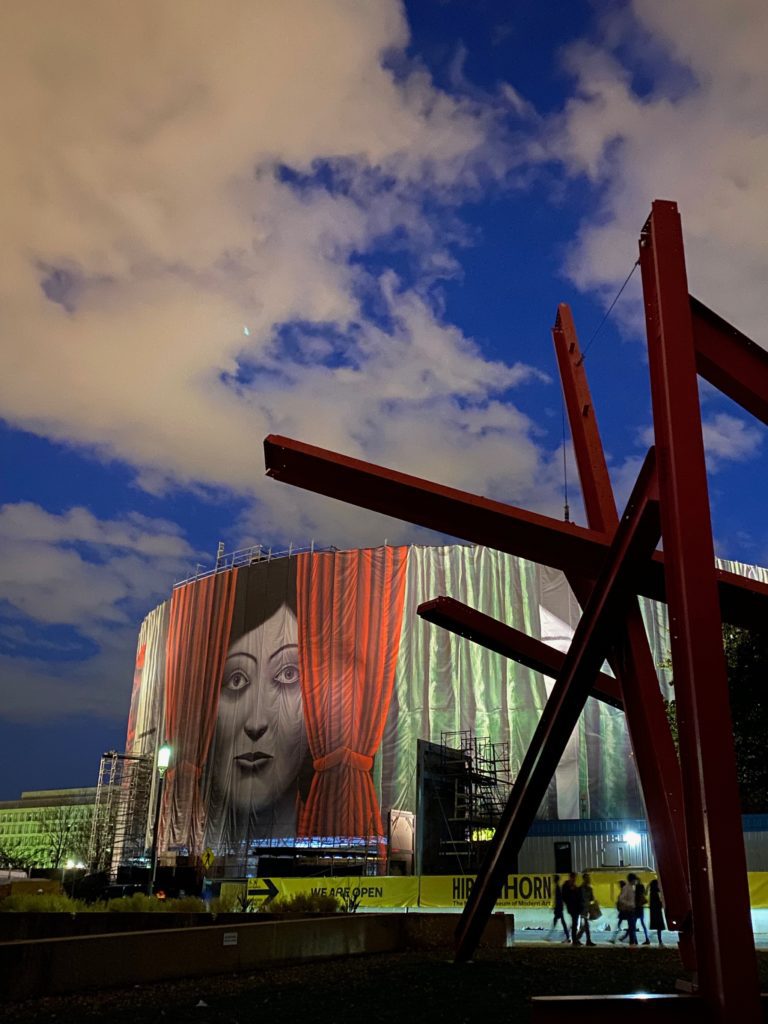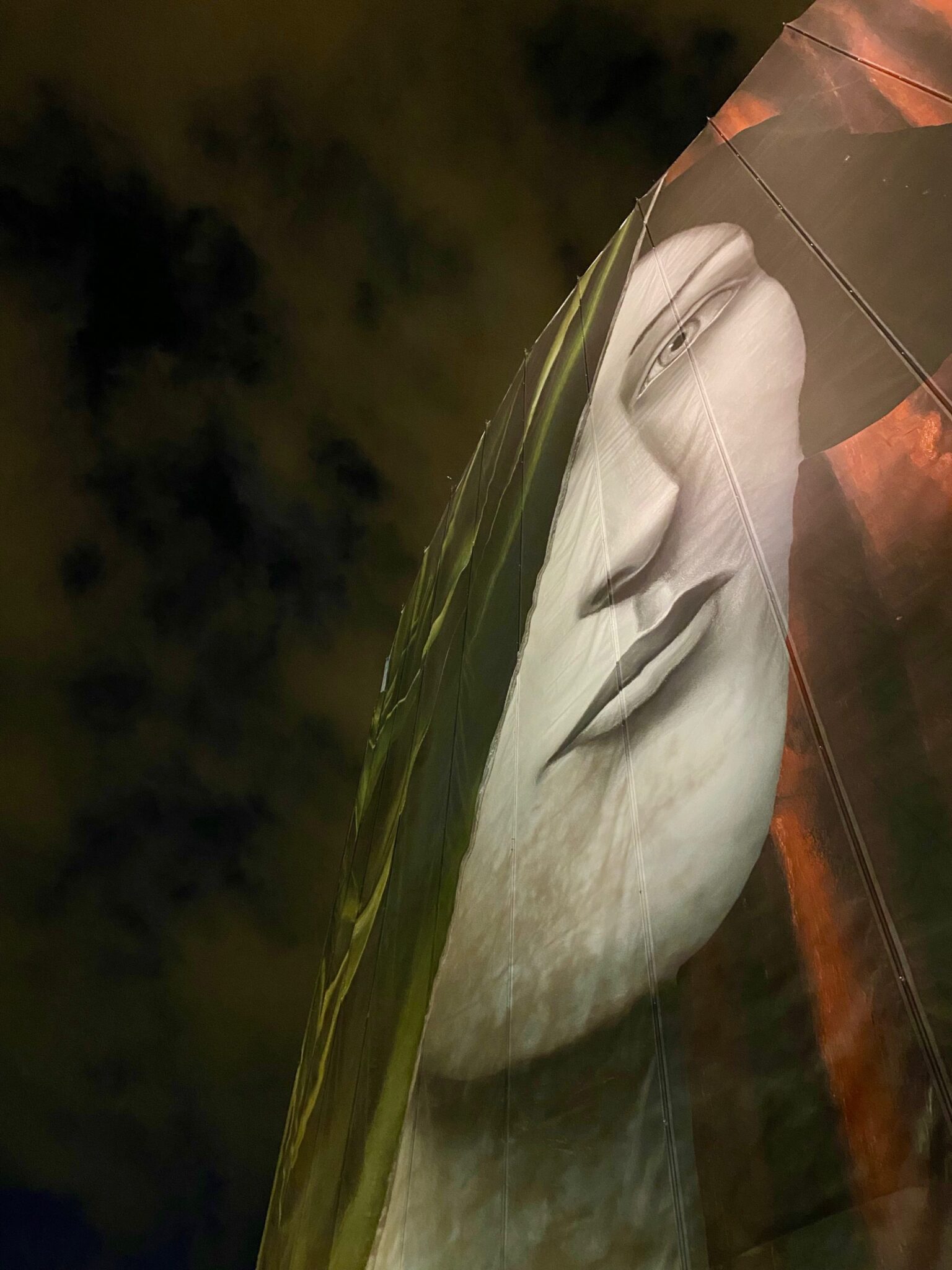Wrapped Hirshhorn Draws Rapt Attention
By • December 2, 2021 0 1307


Detail from “Draw the Curtain” by Nicholas Party. Photo courtesy of the artist to Smithsonian Magazine.
With the frenzied holiday shopping season upon us, many Washingtonians long to escape for a rejuvenating respite of gallery and museum hopping along the National Mall. During the pandemic, however, donning a mask to browse artworks and exhibits indoors has become less enticing.
Fortunately, an outdoor stroll around the artistically wrapped Hirshhorn Museum provides a visually intriguing experience in the painterly arts, day or night, against the backdrop of the Mall’s monumental and distinctive architecture and in massive scale.
With the largest artwork ever displayed by the Hirshhorn — at 84 feet tall and 829 feet around — the Smithsonian’s Hirshhorn Museum and Sculpture Garden found a compelling and awe-inspiring way to embellish the scaffolding and construction work surrounding the museum during major renovations to the site’s exterior panels.
“Draw the Curtain” by Swiss artist Nicolas Party (b. 1980) entices viewers from every vantage point around the building’s unique drum shape — designed by architect Gordon Bunshaft — to explore what’s revealed and hidden behind metaphoric curtains in art and in the fraught politics of the nation’s capital.
“I wanted it to have the effect of saying: “Oh, is there anything behind those curtains?” Party told the Smithsonian Magazine, as he discussed “themes of hiding and revealing” in the work. The monumental work is done in pastel painting digitally collaged and printed onto industrial scrim measuring the length of over two football fields and wrapped – Christo style — around the Hirshhorn. The scrim is both practical as a breathable fabric in the wind, but as it billows in the breeze the curtains in the piece also seem to come alive with movement.
What is it that draws the eye? Several anonymous, and somewhat androgynous, faces in black and white and inspired by classical Greco-Roman sculpture are “partially hidden by draped [and colorful] curtains, gazing directly at the viewer no matter their vantage point around the building,” the work’s placard reads. The curtains are drawn — or sampled from — noted artworks of master painters including Carravaggio, Rembrandt, van der Spelt, Vermeer and Magritte.
Painted in trompe l’oeil to address “themes of dupery and illusion,” the work “conjures a scenographic set.” Passersby are invited thematically to “peek backstage behind the ‘curtain’ on the National Mall and examine both the collections housed within the Smithsonian and the contents of the distinctive government buildings dotting the surrounding landscape.”
The work is especially appealing to take in while it’s dark out and there are even fewer crowds. “Even at night, it was interesting to see. It’s lit and very film noir,” Party told the Smithsonian Magazine. “It looks very much like a spy movie, all those faces, like a Hitchcock movie, all coming out of the curtains and lit up. I think the Mall at night has an interesting dynamic.”

“Draw the Curtain” is especially captivating in the evening. Photo by Chris Jones.
In 2017, Party painted a wall mural, “Sunrise, Sunset” that wound all the way around the third-floor interior hall of the Hirshhorn. During the museum’s refurbishing, modern art exhibits “behind the curtain” inside remain open to the public. The show and the reconstruction are set to finish by the spring of 2022.

